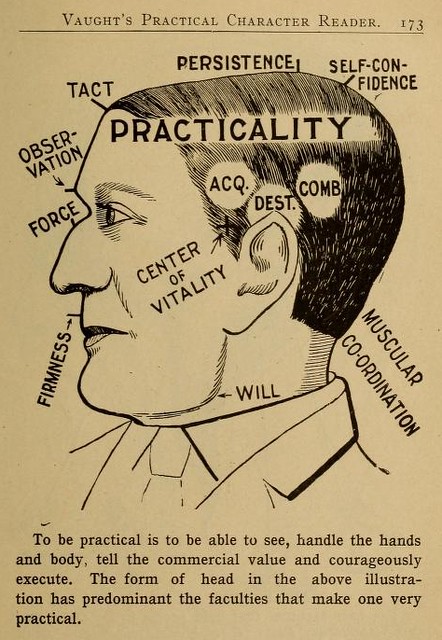LET’S KEEP THIS SIMPLE, SHALL WE?
100: Well, howdy there, Friend! Let me ask you a question. Do you or a spouse struggle with Character Development Mania, known more commonly as CDM? Oh, I hear you, Friend. It’s not easy to admit it when you have a problem and need help. But you can trust me, I’m in sales!
This sounds serious. Tell me more about CDM! Continue from 230.
This doesn’t sound like a real thing. Continue from 350.
I’m mostly here for the fiction and game stuff, not the writing advice. Continue from 410.
110: I can see your the sort to take the bull by the horns, am I right? So here’s the skinny. Here’s how bad it can get. I’m going to give you the straight dope. The unfiltered, unvarnished truth. I’m not going to sugar-coat it.
I’m tough, I can take it. Let’s get the worst over with. Continue from 220.
Uh, this is sounding worse than I thought. Let me sit down first. Continue from 330.
I’m shaken to my core already. Let me out of here! Continue from 500.
120: Are you sure, Friend? Not even a single graduation ceremony missed unexpectedly? Perhaps even your own? No? All righty, then! Glad to hear it! But perhaps you’ve recognized the fact that you were including more backstory than story, and moved to correct it, first during editing, and later on during writing your first draft. Perhaps you found yourself struggling to find ways to incorporate odd tidbits of character lore, and part of you asked another part of you what, exactly, that other part of you was doing. And the part of you that asked this took over all of the functions of the other part, and you became a better writer for it. Maybe that’s what happened, because you sure don’t seem like the sort of writer that would shoehorn in details that are complete fluff just because you need people to know that you, the writer, did all that invisible work. And that’s good news, right?
I suppose so. Continue from 500.
Maybe all that happened, but my relationship to my characters still seems a little wonky, sometimes. Continue from 320.
130: Now, Friend, let’s not get defensive! What I’m talking about isn’t the normal, loving relationship a writer has with their characters. Oh, no. CRM is as abusive disorder where a writer’s notes and thinking about character takes over their writing process. It’s a sad thing to see, too, since it afflicts those with whom notes and backstory are held most dear. You won’t see any dime-store hack catching CDM, no siree! Behind every tragic case of character mania, there was once a dedicated writer who thought they were doing the right thing. So if you suspect you or a loved one might be suffering from CDM, now is the time to act.
By gum, you’re right. What’s the first step on the road to recovery? Continue from 210.
140: Well, Friend, perhaps you just need a literary hug! If you suspect that your CDM is the an attempt to paper over problems in your writing, maybe you should try a project where you use the following handy prescription:
Almost never give direct description of a character, and attempt to demonstrate their qualities through speech and action. Most readers don’t care a whit about the physical descriptions writers give for their characters, anyway, and there is no accepted consensus on what a mobile mouth looks like, much less sensuous lips or a generous demeanor.
Refrain from overt references to how a character feels about any other character, event, or interest. Find more creative ways of letting your readers learn about these things. If you trust your readers to interpret the clues you scatter throughout your story, you are more likely to benefit from a windfall of cash from a grateful public.
Plots rarely collapse due to minimalist characters, as most classic science fiction demonstrates. But if you are attempting fashionable “character driven” narratives, Friend, remember that the best characters exist inside the heads of your readers, rather than on the pages you write. Readers will imagine and remember reams of detail you didn’t provide, as long as you are suggestive enough with what you do write. It’s much like the “uncanny valley” that computer-generated images of people creates. There’s a lot of detail there, but it somehow becomes vaguely off-putting in a way that more stylized art is not. Why? Because when we provide less, the viewer (or reader, in you case, Friend!) fills in the details. You can’t lose!
I’m a better person for having read this! Thanks! Continue from 490.
200: As it becomes more potent, CDM infuses every aspect of a written work. Much like the related International Affairs Backstory Obsession, Character Development Mania can outright ruin a story by forcing a writer to inject needless minutia into every description in order to use some fraction of the voluminous backstory they have created.
Normal preparatory work, or even mild activities that make a writer such as yourself consider a character from new perspectives, is no longer relegated to the background. For example, if you fill out one of the millions of online character quizzes, with questions such as “If your character won a million dollars, who is the first person they would contact to tell them?”, it’s supposed to be asking you, the writer, who is foremost in the character’s thoughts. Under the influence of CDM, you spontaneously decide to have this happen in a story and you think that’s normal.
At its worst, CDM replaces any actual writing with the creation of more backstory, the compilation of lists of details a writer could never use in any normal way, and reams of speculation about the character’s feelings for every other character in the book, as well as all known celebrities, cuisines, and fashion trends. It never ends, and so the project they are supposed to be a part of ends instead.
Late-stage CDM involves realizing you’ve spent all night creating a table of contents for your character notes, joining an art commune to focus on crafting character portraits in watercolor and laboriously weaving tapestries displaying fictional family bloodlines. At its worst, you may find conversations such as this to be eerily familiar:
Spouse: Why did you miss our wedding anniversary?
Writer: I’m sorry, but I was working out my secondary character’s preferences regarding artisnal sourdough and pumpernickel breads.
Spouse: That’s what made you forget about our tenth wedding anniversary?
Writer: I didn’t forget. But a choice had to be made.
Spouse: Oh, Writer! Sometimes I think you care more about your characters than you do about me!
Writer: Fine. Tell me about how you feel about pumpernickel, then, if it’s so important to you.
As you can see, Friend, CDM is a cruel master, and not one to share the affections of the writers it afflicts!
This is horrible! Tell me what I can do to guard myself from developing CDM! Continue from 310.
I’ve got it bad! Tell me how I can recover! Continue from 430.
Uh, I’ve never done anything like this. Continue from 120.
210: The good news is that CDM is a condition with a cure, Friend! Modern techniques allow for non-invasive treatment options. The first step is to identify why you fell into such extremes of character development in the first place:
I thought that if some character traits were a good idea, then more character traits must be better. Continue from 340.
I was just reading stuff on the internet, and there was a lot of character development advice. Continue from 250.
Now that I think about it, I was actually covering for deficiencies elsewhere in my writing. I’m so ashamed! Continue from 140.
220: When CDM is out of control, writers under the influence often find it shapes their writing in three distinctly unpleasant ways:
Neo-Phrenology: The writer waxes poetic about the aristocratic qualities of the character’s brow ridges, their imposing and regal forehead or patrician cheekbones. Extreme cases may reference mobile mouths, or have their character’s eyebrows exhibit characteristics and expressiveness highly improbable for mortal eyebrows to possess. In the very most extreme cases these descriptions extend to anatomical features that are unlikely to be the driving force behind the story’s plot and yet are granted paragraphs so that the reader can recreate in their mind the exact image that the writer has so painstakingly established in their own. These physical traits are used as shorthand for the character’s personality traits, so all of these physical descriptive passages will be offered non-ironically and at length.
Einstein-Rosen Bridging: Another silent cry for help is the habit of having each character not only meet every other possible character, but display a strangely strong and distinct reaction to each, forcing the reader to store each of these relationships in a reality-warping matrix that has no center, in which every character is equally linked to every other character. The hope is this will prove to readers how thoroughly the writer understands the motives of every one of their creations. In this case, there really are no small parts, so readers have a hard time telling who the protagonist is.
Protagonist Rustling: The writer becomes entranced with a minor character, and bends the story to become about them, at times without realizing it. Sometimes this leads to yet another character taking the lead further on, and so on, with the writer hopping without control from one beloved creation to the next, unable to fully commit.
Save me! Continue from 440.
This just sounds like my writing style, and what’s wrong with that? Continue from 130.
230: I admire your open mind, Friend. Character Development Mania is a serious condition that is not only totally real, but afflicts 7-12% of all fiction writers overall, but a staggering 13% of writers of fantasy and science fiction. With grim statistics such as this, it’s no wonder that CDM is one of the leading killers of fictional storylines and plots.
Notes on a character’s backstory is a normal and natural part of every adult’s writing process. There’s no reason to be ashamed of this, Friend, everyone does it. But there are a number of ways this beautiful and natural process can go horribly wrong. While many writers express a healthy interest in the backstory and motivations of their characters, CDM takes this to extremes that begin to hinder a writer’s output, negatively impacts their actual prose, or begins to interfere with aspects of their real life outside of writing.
Mild CDM presents itself much like normal character development, only more so. If, as a writer, you jot a note or two about a character, you might find yourself writing pages of backstory. An entry on a character fact-sheet might start to include not just notable features such as age, ethnicity, and demeanor, but exact height and weight using the metric system, favorite ice cream flavors, pants length and shoe size, and a number of other factoids that are not remotely related to the story in which they appear.
Whoa, that sounds serious. How do I know if It’s getting worse? Continue from 300.
This doesn’t sound so bad. What’s the worst that could happen? Continue from 110.
250: Well, that might be your problem right there, Friend! Never take writing advice off of the internet! The important thing to remember is that there’s a lot of enthusiasm out there, and a lot of people setting themselves up as experts, and you don’t know these people from your Aunt Matilda. So don’t take them all at face value, because, as history has demonstrated, there simply aren’t that many Aunt Matildas around. Never implement someone else’s advice without thinking about if it works for you, and if it gets in the way of your style or your output, send it packing! Just like you did your Aunt Matilda in the winter of ’87!
Good point! Thanks! Continue from 490.
300: As the condition progresses, you might begin to do this sort of extensive minutia-documenting for ever-less-important characters. Checking, cross-checking, updating, and referencing these entries as you write quickly begins to interfere with your writing speed and narrative flow. Eventually, you will find yourself inventing reasons to reference ever more obscure facts about your characters, resulting in conversations such as this:
Character Alpha: Golly, Bravo, I sure do like ice cream!
Character Brave: I do too! I’m sure glad that my grandfather founded the most beloved ice cream company in Boise! The money from that endeavor allowed my mother to afford to pay for my size 13-wide shoes when I was young, as well as an urgent surgery for an ingrown toenail back in the summer of ’53!
Character Alpha: That’s just swell, Bravo! Say, is there any way that can help us solve these gristly murders?
Character Bravo: Not sure, Alpha! But you can bet your bottom dollar I’m going to find out as soon as we escape this airtight brewing cask deep within this burning building!
Character Alpha: That’s the spirit, Bravo!
This is just plain terrible! I need to get the facts about the more serious condition! Read on from 220.
I’m not sure I do this, actually. Continue from 480.
I can’t deny that I’m in denial. Continue from 420.
310: There are a few ways to guard yourself from developing CDM. The first is to simply not keep notes on your characters. Have a loose picture in your head, and just roll with that. This is the way most writers do it, and this defense mechanism has evolved in humans over millions of years, so it’s pretty effective. Think of it like a literary turtle shell.
If you must keep notes, then only list a few typical things that shouldn’t change, like eye color. And only list them when you actually reference this quality in the text. If nobody notes a character has one hazel eye and one brown eye with gold flecks near the pupil, you didn’t need to know that anyway.
Lastly, put a hard limit on physical descriptions for characters past their introductory scene. If you never bothered to mention that your character was a redhead, finding that out on page 213 might be disconcerting for readers if they bothered picturing something else. And most readers don’t bother, actually. If the writer doesn’t mention their appearance, most readers never notice. And if they do, a solid majority ignore these descriptions in any case, either breezing past them, or continuing on with their own internally generated idea of how someone looks. Heck, readers often don’t even realize when a protagonist isn’t even given a name, so, really, why get into a huff?
The same goes for almost every other aspect of a character. Unless it’s how a character would act, few people care. And, unlike physical descriptions, there’s generally a lot of agreement on how characters would act in given circumstances, if you’re doing your job right.
I will always remember these words. Thanks! Continue from 490.
I’m doing these things, but I’ve got a complicated relationship to my characters. Continue from 320.
320: Sometimes your relationship to your characters is like your relationship to everyone else: a bit awkward and uncomfortable. Just do what you’re doing, and keep it spare. Strangely, the more you starve a character of nonessential detail, the more avidly your readers will consume them, which is an awkward metaphor, but let’s just roll with it for now. Remember, your characters live as much in the minds of your readers as they do in yours. Hopefully your readers will have a better relationship to them than you do. Just give them the bare essentials for survival, send them out into the world, and move on to the next. Like actual child rearing, am I right?
Wise words indeed! Continue from 500.
330: Now, now, Friend. I’m here for you. Just remember, that there is hope. After all, you’re in the driver’s seat, here. You can decide if your characters sit in the front, but if they do you put them into the passenger seat and buckle them up tight. Sure, you may allow them to choose a radio station and adjust the vents, but you slap their hands away if they start to monkey with the gear shift! And some characters, let’s be honest, need to be kept in the back seat. Maybe even in a child seat, facing the rear windows. And a few need to be transported in the trunk.
Intriguing! I think I’m ready for some specifics that aren’t couched in metaphor now. Continue from 220.
340: Thinking that more is better is a perfectly reasonable logical fallacy, which is why it’s so common. But, while absolutely everyone enjoys seeing a particularly striking bird sitting on a power line, they are usually less enthused by seeing thousands of them sitting on every surface as far as they eye can see. So remember, what goes for our avian friends also goes for our literary elements. Pick one or two telling details, and let it go at that.
I understand now, thanks! Continue from 500.
I’m skeptical. How bad can this get, really? Continue from 220.
350: Oh, but it is, Friend! Let me ask you a question. Have you ever been minding your own business when a relative you almost never see – say, your Aunt Matilda – comes over for an unexpected visit? So you invite her in, and maybe get her a tea, or a mint julep. Well, Aunt Matilda accepts, and the next thing you know, you’re hearing about some cousin on her mother’s side, whom you’ve never met, and the affair this cousin is having with her landlord’s electrician. And you wait for the anecdote to end, but soon realize that it isn’t an anecdote at all. It’s the reason for her coming in the first place, because the electrician is now blackmailing the cousin, trying to force them to give up the location of Aunt Matilda’s safebox.
So this is actually about Aunt Matilda’s safebox? Oh, wait. I get it, now! This really is a dangerous thing for writers to fall victim to! Continue from 230 to learn more.
Tell me more about Aunt Matilda, and this safebox. Continue from 400.
400: The safe box was commissioned for her before the war in order for her to bury the family silver in the back yard, but rumor has it that she now has it stuffed with hard drives full of crypto-currencies, and it is kept in the back room of a laundromat in Boise. Satisfied?
Wait, have I been derailed by irrelevant details? Insidious! Continue from 230.
410: I feel you, Friend! But have you ever wanted to write a series of critically acclaimed novels, or a trove of beloved short stories, but were afraid of the many pitfalls? Pitfalls such as the creeping need to saddle a character with countless details and entanglements that add nothing to the plot? Well, have you, Friend?
When you put it that way… Read on from 230.
Still no. Sorry. Just give me the game stuff. Continue from the previous page of blog posts.
420: I know how it is, Friend. The life of a writer is a lonely one, full of melancholy and a deep yearning for human contact. And when you manage to break out of your self-imposed prison, and reach out a trembling hand to a fellow human being in order to hand them an unsolicited manuscript, more often than not it is spurned, if not outright ridiculed. So I can understand if you’re a bit tender.
But let me assure you, Friend, that self-examination in the privacy of your own home can often lead to the discovery of uncomfortable truths, such as an additional toe, or a previously unknown tattoo recording the five-digit combination to the lock on Aunt Matilda’s safebox, or the QR code of some crypto-currency security software, or, most relevant in this case, a manuscript chock-a-block full of unneeded character traits and entanglements.
Huh, that’s exactly what my moment of self-discovery has uncovered! Read on from 230.
Nope. Still isn’t ringing any bells. Continue on from 480.
430: First off, don’t stop writing just to go back over your already-written work and start monkeying with it. That’s the path to literary Sheboygan, because once you’re there, you’ll never want to leave, am I right? Anyway, keep on plowing ahead with your first draft, but when you’re tempted to add in that bangle bracelet the character’s Aunt Matilda gave to them that was made from the melted fermentation tanks of the devastated family brewery, just don’t do it. It’s that simple. And when one character wants to interject some detail about how they just lost a hard drive full of crypto-currencies, you shut that line of conversation right down, capisce? And when you’re doing your next draft, you can weed out any references to the plumber’s dog walker, and what he saw while peeking through a window on a cold November morning in October of ’53, because your story doesn’t involve any of those things.
That’s great and all, but can you give me some solid advice, here? Continue from 310.
I’m a better person for having read this, and will do right from now on. Continue from 500.
440: I’m here for you, Friend! Now, thanks to the wonders of modern science, there’s hope for you and thousands like you. Why, just in fantasy and science fiction alone, modern polling places the number of afflicted at “Lots and Lots,” so you’re not on this journey alone!
Continue from 310.
480: That’s great to hear, Friend! Most writers aren’t subject to CDM, and you don’t want to take unnecessary medical advice, right? Keep fighting the good fight, Friend!
Stop reading, or reconsider the veracity of your answers and start again from 100.
490: You’re welcome, Friend! And say hi for me to [the Missus / the Menfolk / the Pet / a potted plant who is your only companion / your Aunt Matilda].
Will do! Continue from 500.
500: I hope you’ve learned all you need to know to guard yourself from this vile and entirely preventable malady. Just remember, Character Development Mania starts as something good, and admirable, so be gentle with yourself if you fall victim to it. Good day, Friend!





